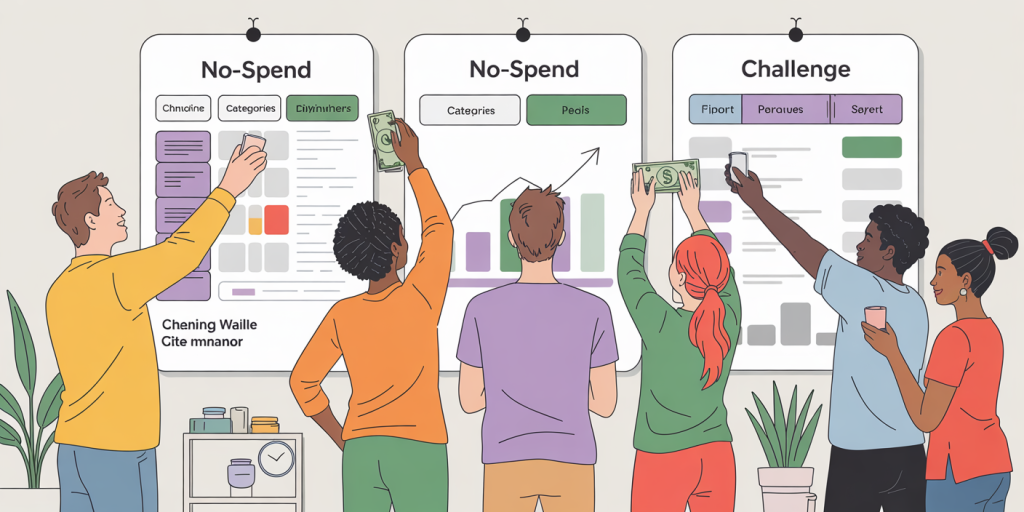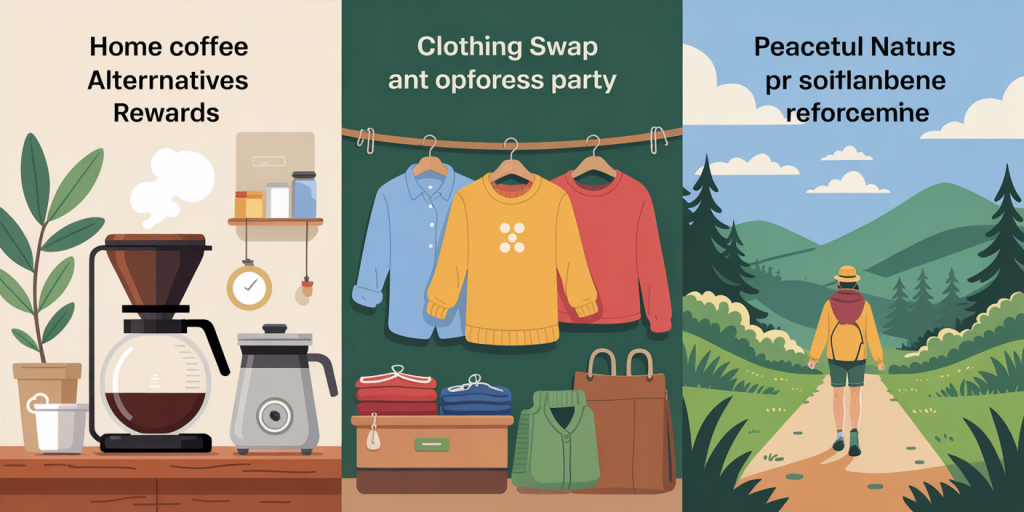In a world dominated by consumerism and instant gratification, managing personal finances can feel overwhelming. One proven method to regain control over spending habits is through a no-spend challenge. This intentional period of minimal or no discretionary spending can serve as a reset button for your financial life. However, not all no-spend challenges yield the desired results. Many participants start with enthusiasm only to abandon the effort within days. To ensure success, it’s crucial to design a no-spend challenge tailored to your lifestyle, incorporating structure, realistic goals, and accountability.

The appeal of no-spend challenges is grounded in psychology and financial science. Research from the National Endowment for Financial Education shows that about 60% of people struggle to stick to budgeting plans, often due to unplanned purchases. A no-spend challenge eliminates decision fatigue and creates a clear boundary against impulsive spending. Yet, the design and execution of the challenge play critical roles in making it effective. This guide explores practical steps, real-life examples, and data-backed strategies to craft a no-spend challenge that truly works for you.
Understanding the No-Spend Challenge: More Than Just Cutting Costs
A no-spend challenge isn’t merely about spending less; it’s about changing your mindset and building sustainable habits. Most people mistake it for extreme deprivation, which often results in burnout. Instead, successful challenges focus on prioritizing needs over wants and fostering intentionality with money.
For example, Sarah, a marketing executive from Austin, Texas, undertook a 30-day no-spend challenge targeting non-essential purchases only. She allowed herself to spend on groceries, bills, and essential utilities but refused to buy coffee, dining out, or entertainment. This strategy helped her save $400 in a month without feeling deprived. Research by Mint.com highlights that discretionary spending accounts for nearly 30% of the average person’s monthly expenses, making it an excellent target for reduction via no-spend challenges.
By redefining the purpose as “mindful spending” rather than “no spending,” you create a more sustainable and psychologically rewarding experience. The goal is to develop long-term financial discipline rather than a temporary fix.
Setting Clear, Achievable Goals
Clear goals serve as a foundation for success in any financial endeavor. Your no-spend challenge must have well-defined parameters—what expenses are off-limits, duration, and expected outcomes. Ambiguity leads to inconsistency, which reduces commitment.
First, choose the duration realistically. According to a 2019 survey by Clever, 60% of no-spend challenge participants argued that a 30-day period was ideal, balancing impact and sustainability. Beginners may start with a short 7-day challenge, gradually increasing the length as habits solidify. For instance, John, a freelance writer from New York, started with a weekend challenge, saving $120 by skipping his usual takeout and bar visits.
Second, list categories that are considered essential and non-essential. Essentials usually include rent/mortgage, utilities, groceries, transportation, and medical expenses. Non-essentials to cut out might be dining out, clothing, subscriptions, and impulse buys. A helpful approach is to create a spending categories table:
| Expense Category | Allowed During Challenge? | Notes |
|---|---|---|
| Rent/Mortgage | Yes | Essential |
| Utilities (Electricity, Water, Internet) | Yes | Essential |
| Groceries | Yes | Essential |
| Dining Out | No | Non-essential |
| Clothing & Accessories | No | Non-essential |
| Entertainment (Movies, Events) | No | Non-essential |
| Subscriptions (Music, Magazines) | Optional | Can pause temporarily |
| Transportation | Yes | Essential (e.g., gas, public transit) |
By specifying allowed expenses, you minimize ambiguity and strengthen resolve.
Creating Accountability Systems
Accountability is a powerful driver for behavior change. Without it, motivation often wanes as the novelty of the challenge fades. Creating a system where you answer to someone or your own set standards ensures higher adherence.
One effective method is partnering with a friend or family member who joins the challenge alongside you or serves as a sponsor. Michelle and her sister Kate in Chicago formed a 60-day no-spend pact in 2022. They checked in weekly via video calls, sharing wins, challenges, and strategies. This mutual support led to a 25% reduction in their average monthly discretionary spending.

Digital tools also enhance accountability. Apps like YNAB (You Need A Budget) and EveryDollar provide budgeting templates that track your progress in real-time. Some apps send reminders and alerts when you are near your budget limits, discouraging unnecessary purchases.
Finally, publicly committing to a challenge on social media or personal blogs can also enhance accountability. Knowing others are observing your progress motivates you to stay on track.
Planning Alternatives and Rewards
No-spend challenges should not feel like punishment. Incorporating alternatives to spending and a system of rewards greatly improves outcomes. For example, instead of going out for coffee, brew it at home and experiment with different recipes. Instead of shopping for new clothes, organize a swap party with friends or repurpose existing wardrobe pieces.
Building alternatives taps into creativity and ensures you feel satisfied without spending. Another example is replacing movies out with a cozy movie night at home using a streaming subscription you already pay for.
Rewards should be designed carefully. Consider non-monetary rewards or small treats already budgeted for before the challenge starts. For instance, after a successful two weeks, treat yourself to a favorite homemade meal or a nature hike. Rewards reinforce positive behavior without derailing the challenge.

Monitoring Progress and Adjusting Strategies
Tracking your progress concretely helps maintain motivation and identify areas needing improvement. Keep a journal or spreadsheet documenting each day’s spending and reflections on temptations or urges. For instance, Emily from Denver realized through journaling that her biggest challenge was avoiding snack purchases during breaks at work. By identifying this trigger, she packed healthy snacks weekly, reducing impulse spending.
Comparison of planned vs. actual spending highlights success and gaps. Visual aids like charts or graphs improve clarity. For example:
| Week | Planned No-Spend Days | Actual No-Spend Days | Savings Achieved ($) |
|---|---|---|---|
| Week 1 | 7 | 6 | 90 |
| Week 2 | 7 | 7 | 120 |
| Week 3 | 7 | 5 | 75 |
| Week 4 | 7 | 6 | 80 |
Regular reflection on challenges helps refine rules and expectations. Flexibility is important—if you fail one day, don’t abandon the entire challenge. Instead, adjust strategies, learn from setbacks, and continue.
Long-term Financial Benefits and Future Perspectives
Beyond immediate savings, a well-structured no-spend challenge fosters habits that promote financial well-being long after the challenge ends. Studies by the Journal of Consumer Research indicate that intentional budgeting reduces financial stress by 25% and improves confidence in managing money.
Participants often report enhanced awareness of their spending triggers and more thoughtful purchasing decisions. Research by Fidelity showed that 70% of people who completed a no-spend challenge continued to reduce discretionary spending by at least 15% six months later.
Looking forward, the no-spend challenge can serve as a foundation for broader financial goals like paying off debt, building emergency funds, or investing. It’s also adaptable to different life stages, whether saving for a home, handling student loans, or preparing for retirement.
Innovations in financial technology will increasingly support no-spend efforts, with apps using AI to provide personalized alerts and financial coaching. Furthermore, as societal focus on sustainability grows, no-spend challenges align with minimalist and eco-conscious lifestyles, reducing overconsumption and waste.
In summary, creating a no-spend challenge that actually works requires clear goal-setting, accountability, alternative activities, progress tracking, and a focus on long-term benefits. By approaching it as a behavior change rather than just a cost-cutting exercise, you position yourself to achieve not only immediate savings but lasting financial health.

Deixe um comentário